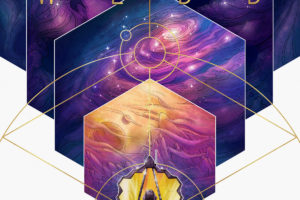NASAが新たにカイパーベルトの天体2014Mu69 であるUltima Thule(ウルティマ・トゥーレ)の高解像度3D画像とアニメーションを公開しました。
3D画像の方はステレオメガネで見ると立体視できるものです。
アニメーションの方はGIF画像のものです。
このアニメーションは38分間での回転だということですから結構な高速スピンをしている天体だと言えます。
それぞれNASAのオリジナル記事を紹介します。(日本語訳は参考です)
Ultima Thule in 3D
The New Horizons science team created the first stereo image pair of Ultima Thule. This image can be viewed with stereo glasses to reveal the Kuiper Belt object’s three-dimensional shape. The images that created the stereo pair were taken by the Long-Range Reconnaissance Imager (LORRI) at 4:23 and 5:01 Universal Time on January 1, 2019 from respective ranges of 38,000 miles (61,000 kilometers) and 17,000 miles (28,000 kilometers), with respective original scales of 1017 feet (310 meters) and 459 feet (140 meters) per pixel.
Release Date: January 3, 2019
記事URL: http://pluto.jhuapl.edu/Galleries/Featured-Images/image.php?page=1&gallery_id=2&image_id=580

ニューホライズンズのチームは、初となるUltima Thule(ウルティマ・トゥーレ)のステレオ画像を作成しました。この画像をステレオメガネで見るとカイパーベルトの天体の立体形状がわかります。このステレオ画像は、 世界標準時 2019年1月1日の4時23分および5時1分に、 それぞれ38,000マイル(61,000キロメートル)および17,000マイル(28,000キロメートル)の位置から超望遠カメラ(LORRI)によって撮影されたものです。 解像度はそれぞれ1ピクセルあたり1017フィート(310メートル)と459フィート(140メートル)です。
Ultima Thule Animation
In this animated GIF of Kuiper Belt object Ultima Thule made from two images taken 38 minutes apart, the “Thule” lobe is closest to the New Horizons spacecraft. As Ultima Thule is seen to rotate, hints of the topography can be perceived. The images were taken by the Long-Range Reconnaissance Imager (LORRI) at 4:23 and 5:01 Universal Time on January 1, 2019 from respective ranges of 38,000 miles (61,000 kilometers) and 17,000 miles (28,000 kilometers), with respective original scales of 1017 feet (310 meters) and 459 feet (140 meters) per pixel.
Release Date: January 3, 2019
記事URL:http://pluto.jhuapl.edu/Galleries/Featured-Images/image.php?page=1&gallery_id=2&image_id=579

38分間隔で撮影した2枚の画像からカイパーベルトの天体であるUltima Thule(ウルティマ・トゥーレ)のアニメーションGIF画像を作成しました。耳たぶのような片側の部分が探査機ニューホライズンズに最も近寄っています。 Ultima Thule (ウルティマ・トゥーレ) が回転しているように見えるので、地形がわかり易くなっています。画像は世界氷人時間2019年1月1日の4時23分および5時1分に超望遠カメラ(LORRI)によって、それぞれ38,000マイル(61,000キロメートル)および17,000マイル(28,000キロメートル)の地点で撮影されたものです。解像度はそれぞれピクセルあたり1017フィート(310メートル)と459フィート(140メートル)です。
![[商品価格に関しましては、リンクが作成された時点と現時点で情報が変更されている場合がございます。] [商品価格に関しましては、リンクが作成された時点と現時点で情報が変更されている場合がございます。]](https://hbb.afl.rakuten.co.jp/hgb/179daeb8.20b860fd.179daeb9.7b1b7085/?me_id=1299608&item_id=10023510&m=https%3A%2F%2Fthumbnail.image.rakuten.co.jp%2F%400_mall%2Fbbooks%2Fcabinet%2Fitem22%2Fgds00619.jpg%3F_ex%3D80x80&pc=https%3A%2F%2Fthumbnail.image.rakuten.co.jp%2F%400_mall%2Fbbooks%2Fcabinet%2Fitem22%2Fgds00619.jpg%3F_ex%3D400x400&s=400x400&t=picttext)

![[商品価格に関しましては、リンクが作成された時点と現時点で情報が変更されている場合がございます。] [商品価格に関しましては、リンクが作成された時点と現時点で情報が変更されている場合がございます。]](https://hbb.afl.rakuten.co.jp/hgb/179daf83.da614166.179daf84.6336e1dc/?me_id=1332760&item_id=10006674&m=https%3A%2F%2Fthumbnail.image.rakuten.co.jp%2F%400_gold%2Fw-col%2Fart_gazou_502MB%2F79015.jpg%3F_ex%3D80x80&pc=https%3A%2F%2Fthumbnail.image.rakuten.co.jp%2F%400_gold%2Fw-col%2Fart_gazou_502MB%2F79015.jpg%3F_ex%3D400x400&s=400x400&t=picttext)
![[商品価格に関しましては、リンクが作成された時点と現時点で情報が変更されている場合がございます。] [商品価格に関しましては、リンクが作成された時点と現時点で情報が変更されている場合がございます。]](https://hbb.afl.rakuten.co.jp/hgb/179dae7f.4f51fbed.179dae80.f06844b4/?me_id=1245023&item_id=10038846&m=https%3A%2F%2Fthumbnail.image.rakuten.co.jp%2F%400_mall%2Fcandybox%2Fcabinet%2Fitems%2Fch0038-main.jpg%3F_ex%3D80x80&pc=https%3A%2F%2Fthumbnail.image.rakuten.co.jp%2F%400_mall%2Fcandybox%2Fcabinet%2Fitems%2Fch0038-main.jpg%3F_ex%3D400x400&s=400x400&t=picttext)










